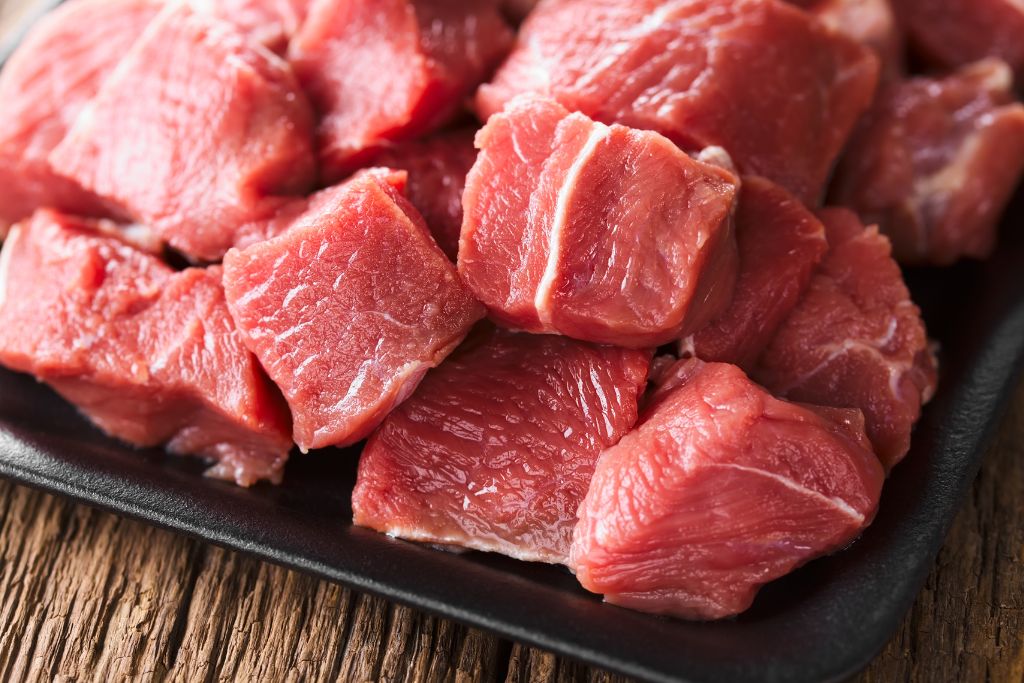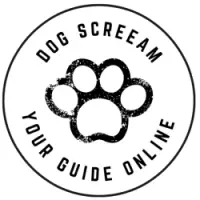Can dogs eat raw beef? Raw beef can be a healthy addition to a dog’s diet if properly handled and prepared. Raw beef, also known as “BARF” (biologically appropriate raw food), can provide dogs with high-quality protein and nutrients. However, some potential risks are associated with feeding raw beef to dogs, so it’s essential to be mindful of these before deciding to include them in your dog’s diet.

Pros of raw beef for dogs
- Nutrient-rich: Raw beef is a good source of high-quality protein and essential nutrients, such as iron and B vitamins. These nutrients can help to support a dog’s overall health and well-being.
- Lean protein: Raw beef is a lean protein source, which can be beneficial for dogs that are overweight or prone to weight gain.
- Dental health: Feeding raw beef to dogs can help to improve their dental health, as the chewing process can help to clean their teeth and gums.
Cons of raw beef for dogs
- Risk of bacterial contamination: Raw beef can contain harmful bacteria, such as Salmonella and E. coli, which can cause food poisoning in dogs. It’s important to handle raw beef safely and to store it properly to reduce the risk of bacterial contamination.
- Risk of choking: Raw beef can be a choking hazard for dogs due to its size and shape. Cut the beef into small pieces or grind it before feeding it to your dog to reduce the risk of choking.
- Risk of digestive issues: Some dogs may have difficulty digesting raw beef, mainly if they are not used to eating this diet. Symptoms of digestive issues in dogs can include vomiting, diarrhea, and abdominal pain.
Here are some other things to consider when feeding raw beef to your dog
It’s essential to remember that raw beef should only be given to dogs as part of a balanced diet and should not be used as a substitute for a complete and balanced commercial dog food. Suppose you are considering adding raw beef to your dog’s diet. In that case, it’s essential to consult with a veterinarian or a canine nutritionist to ensure that it is appropriate for your dog and to get guidance on preparing and feeding it safely.
- Source of the beef: It’s essential to choose high-quality, fresh beef for your dog and to ensure that it has been handled and stored properly. You may consider sourcing your beef from a reputable supplier, such as a local farmer or a trusted store.
- Variety in the diet: Raw beef should not be the only protein source in your dog’s diet. It’s essential to include a variety of protein sources, such as chicken, lamb, and fish, to ensure that your dog is getting a balanced diet.
- Supplements: When fed a raw diet, some dogs may need additional supplements, such as vitamins and minerals. It’s essential to consult with a veterinarian or a canine nutritionist to determine if your dog needs any supplements and to get guidance on the appropriate amount and type to give.
- Transitioning to a raw diet: If you are considering switching your dog to a raw diet, it’s essential to do so gradually to allow their digestive system time to adjust. It would be best if you started by introducing small amounts of raw beef into their diet and gradually increasing the amount over a week or two.
Raw beef can be a healthy and nutritious addition to a dog’s diet as long as it is handled and prepared safely and fed as part of a balanced diet. If you have any concerns about feeding raw beef to your dog, or if you are considering switching your dog to a raw diet, it’s essential to consult with a veterinarian or a canine nutritionist for guidance.
